Rating index:
Extraordinary (96-100)
Outstanding (93-95)
Very good to Excellent (89-92)
Above average to Good (86-88)
Below Average to Average (80-85)
Avoid (below 80)
More info >
Extraordinary (96-100)
Outstanding (93-95)
Very good to Excellent (89-92)
Above average to Good (86-88)
Below Average to Average (80-85)
Avoid (below 80)
More info >
Baumanière is a family-run hotel located in Les-Baux-de-Provence, set right in the middle of the Alpilles, a rocky mountain range in Provence. The hotel is well-known for its unique location, but it's famous for being the home of the illustrious restaurant l'Oustau de Baumanière ("l'Oustau"). The hotel and restaurant were founded in 1945 by Raymond Thuillier (b. 1897 - d. 1993) and in 1954 l'Oustau was awarded 3 Michelin stars. For decades it was THE place to go to for royals and celebrities, when they were staying in the South of France. Famous guests and/or diners were Pablo Picasso, Luciano Pavarotti, Princess Grace of Monaco, and Queen Elizabeth and Prince Philip. Another famous guest in 1982 was Heston Blumenthal, who went there with his parents during a family holiday in Provence, an experience he has described as follows: "It really was a coup de foudre - love at first sight. I fell in love with cooking and the idea of being a chef." (The Big Fat Duck Cookbook).
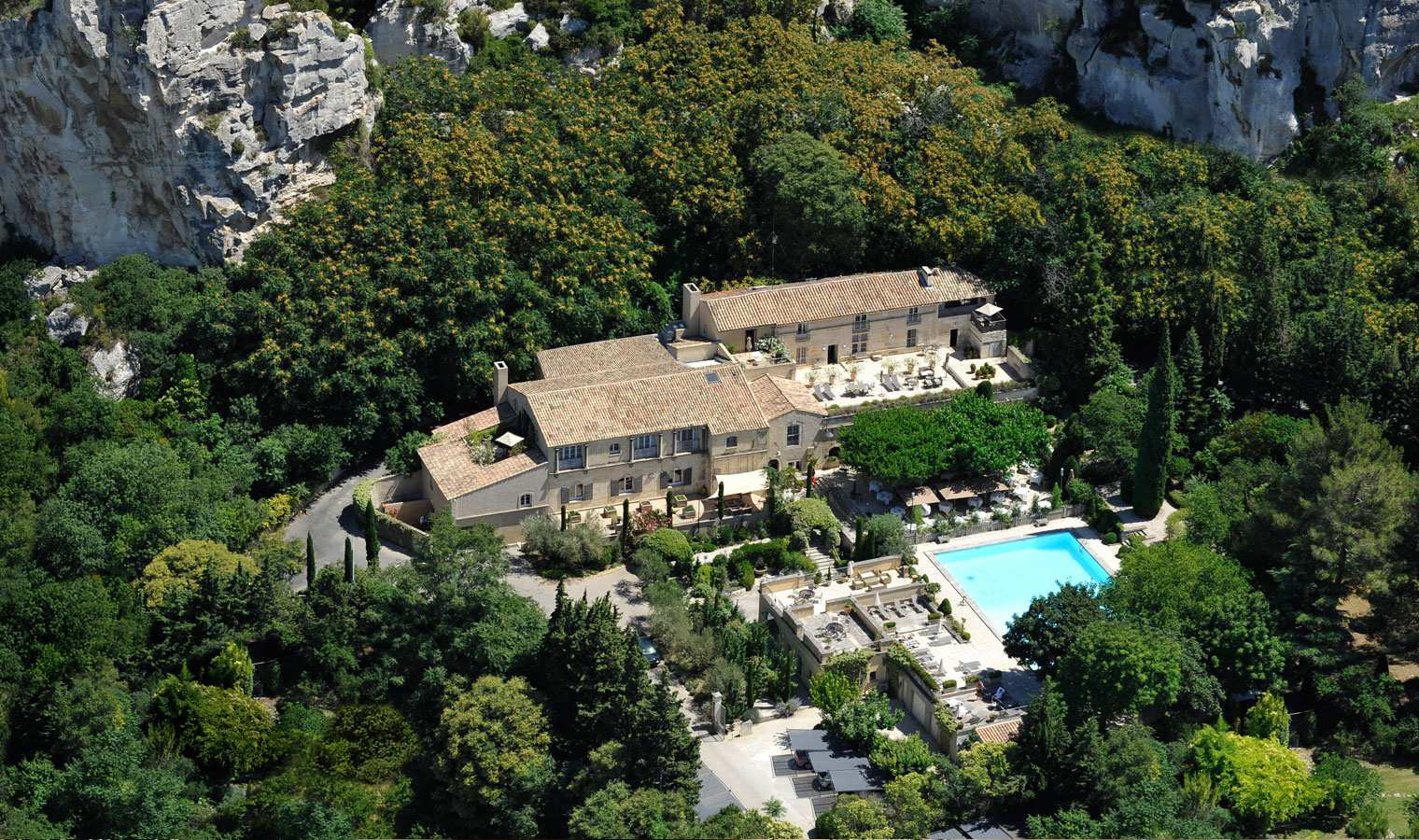
(courtesy of Baumanière)
The establishment is currently run by Raymond Thuillier's grandson, Jean-André Charial (b. 1945) and his wife Geneviève. Jean-André started his career working alongside his grandfather in the kitchens of l'Oustau in 1969, but in the following years he also trained and worked in the kitchens of France's finest chefs, such as the Troisgros brothers, Paul Haeberlin, Paul Bocuse, Alain Chapel, and Frédy Girardet. In 1990, three years before Raymond Thuillier's death, the restaurant was demoted to two Michelin stars, an accolade it has held ever since.
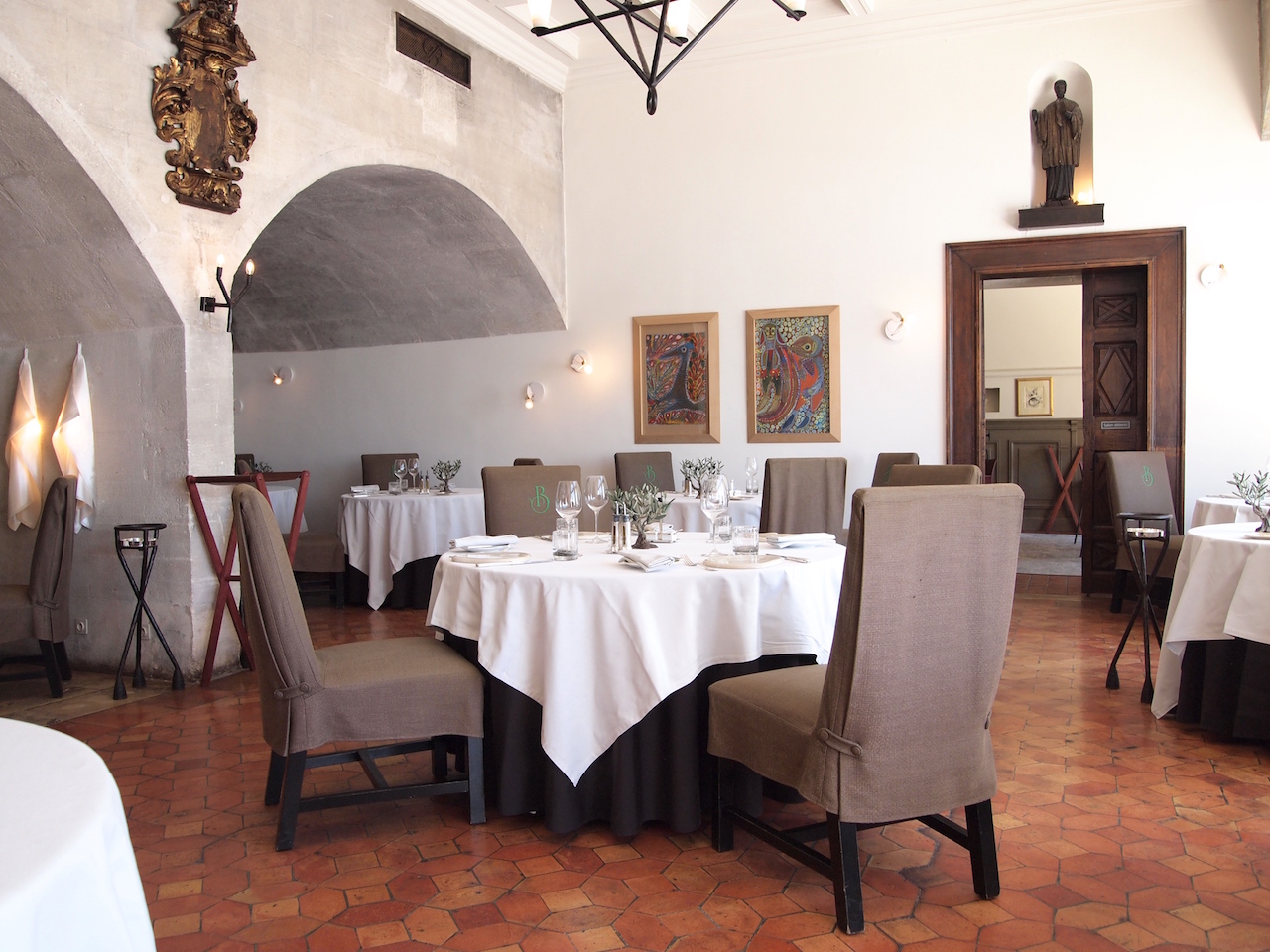
From March till October the restaurant is open daily for lunch and dinner. There are different opening times from October through December, and there's an annual winter closure; do check the website for the applicable opening times. The restaurant offers an à la carte menu (starters €45-€82, mains €60-€88, desserts €25) and three tasting menus. There's the "Evolution-Tradition" menu (5 courses, including cheese, for €160), the "La Ballade des Baux" menu (6 courses, including cheese, for €210), and the vegetarian "Menu Légumes" (6 courses, including cheese, for €130). On weekdays there's a 3-course set lunch menu available for €90. I had lunch at l'Oustau on Wednesday 4 May 2016 and I went à la carte.

Lunch started with some Baux olives served on an olive tree. Obviously this reminded me of the olive tree tree at El Celler de Can Roca. The difference between the two is that at Can Roca the olives are caramelised and filled with anchovies, while at l'Oustau they just serve plain, unadorned olives (with pits!). After all the the area is famous for its Les Baux olives and olive oil, which has an AOP status. With the olives came a delicious pesto and tomato bread roll, accompanied by a lovely Provençal mousse with wonderful meaty tomato flavours, almost like a Bolognese, but then seasoned with Provençal herbs.
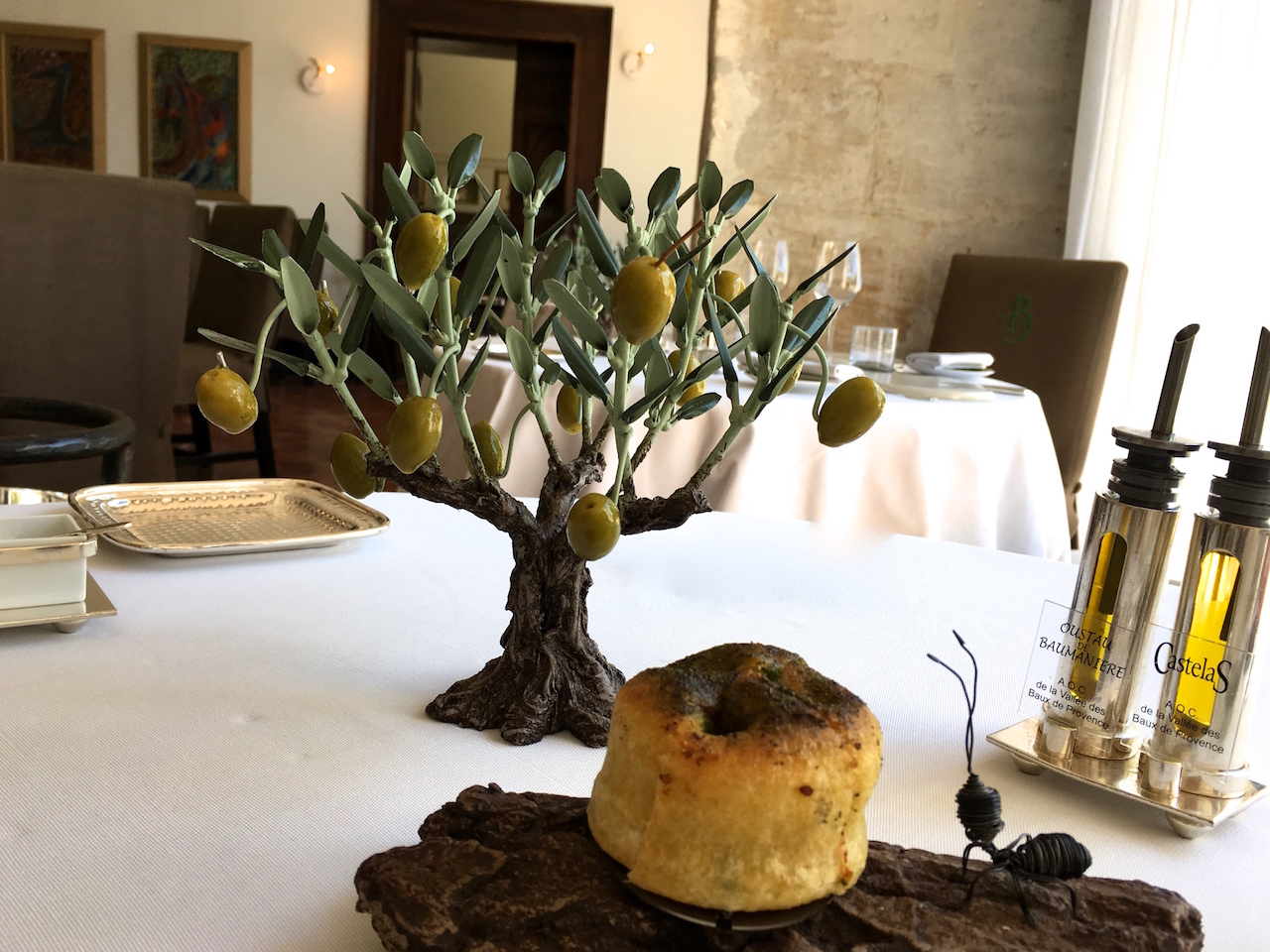
This was followed by a delightful amuse bouche of onion confit topped with a foamy mussel velouté.
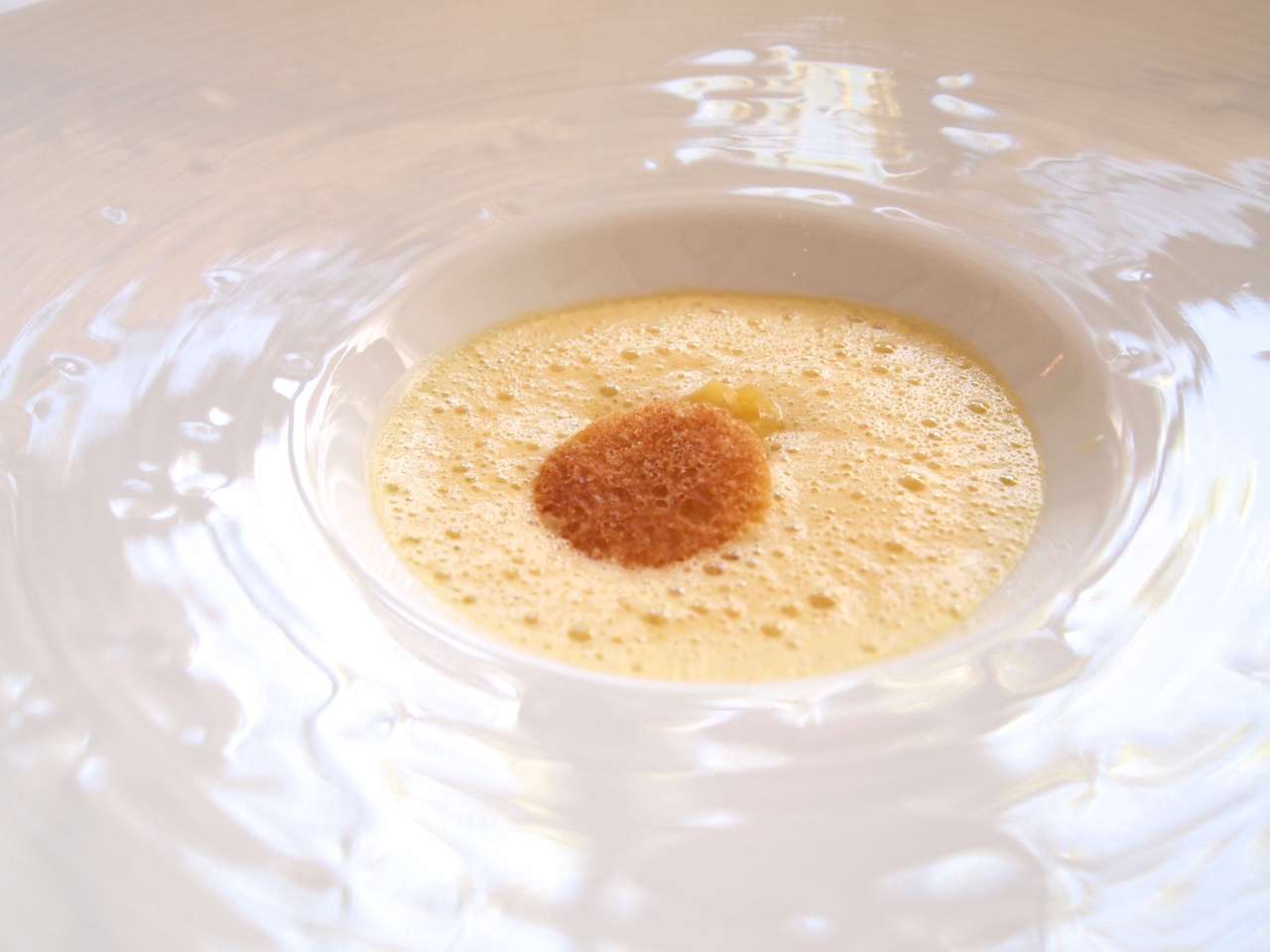
My starter was a beautifully made, buttery and crisp tartlet (ring) with a mildly sweet pea puree at the bottom, and topped with an elegant mixture of fresh, sweet peas, delicately seasoned with mint, and garnished with cubes of carrot and cooked ham. With the tartlet came a wonderful, intensely flavoured carrot sauce, made with baby carrots and a touch of lemon for balance. I liked how the carrot sauce intensified the sweetness of the peas. A highly seasonal dish with clean and refined flavours, the pastry adding crunch and buttery comfort.
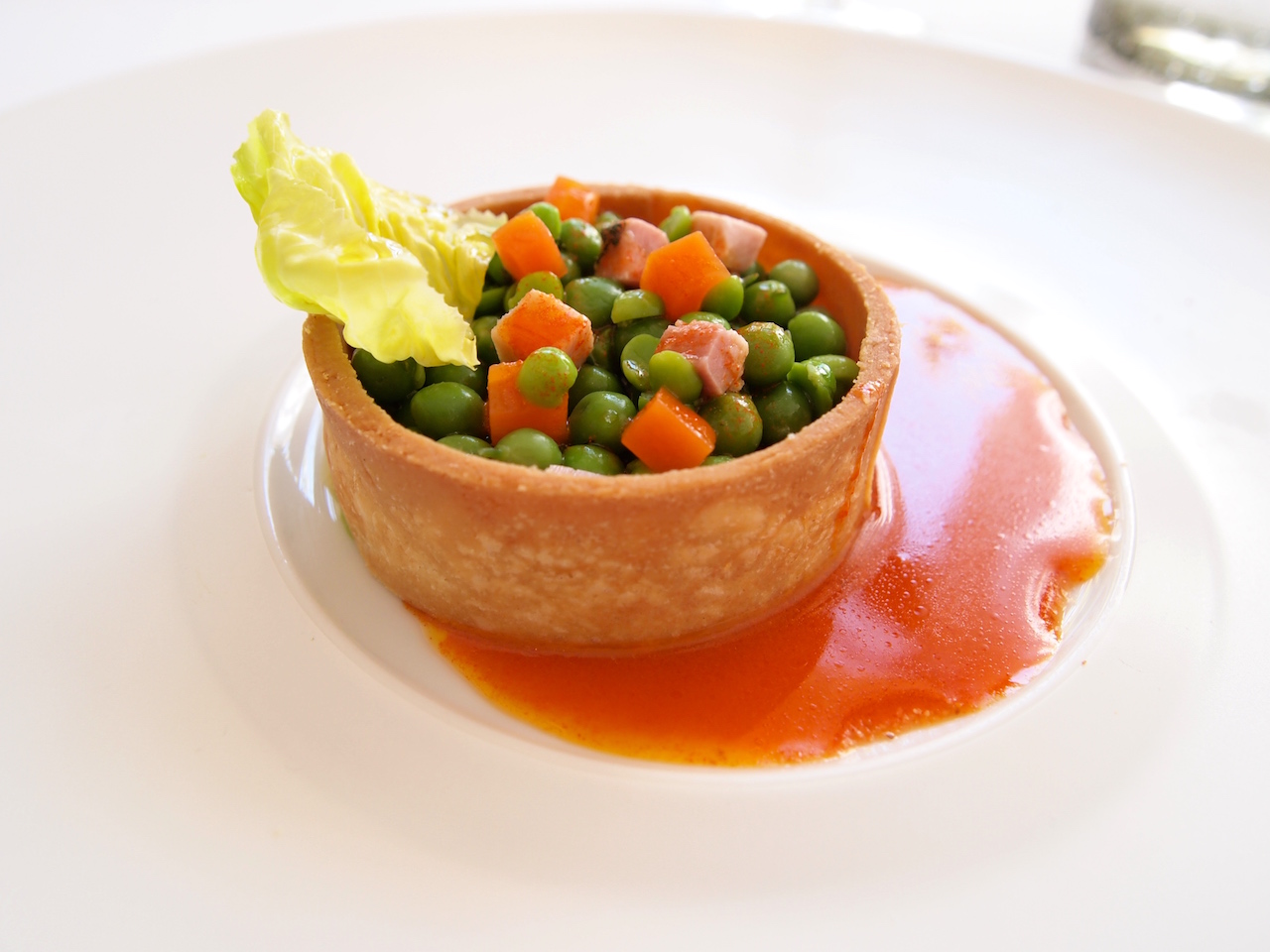
This was followed by "Feuille à Feuille de Cochon", an absolutely spectacular main course best translated as Pork Mille-Feuille, with gorgeous, seemingly endless thin layers of tender pork fillet, sweet and rich onion confit, and bacon. A thing of real beauty, and to accompany this beauty there was some cylinder-shaped blood pudding, garnished with puffed rice and apple, and a rich and sticky pork reduction.


Next up was cheese, and as you would expect at a place like l'Oustau, there was a fantastic selection of cheeses, including a great choice of goat's cheeses.

Dessert today was wild strawberries, nicely paired with fromage blanc, green tea and mint sorbet, strawberry puree and sauce, fresh herbs/leaves including purple shiso, and some sort of crispies, that brought a nice crunch to the plate. A few delicious Arlette biscuits were served on the side. A lovely and pleasing marriage of fresh flavours, the Arlette biscuits being a perfect companion, and the strawberry sauce having an elegant sweetness to it.

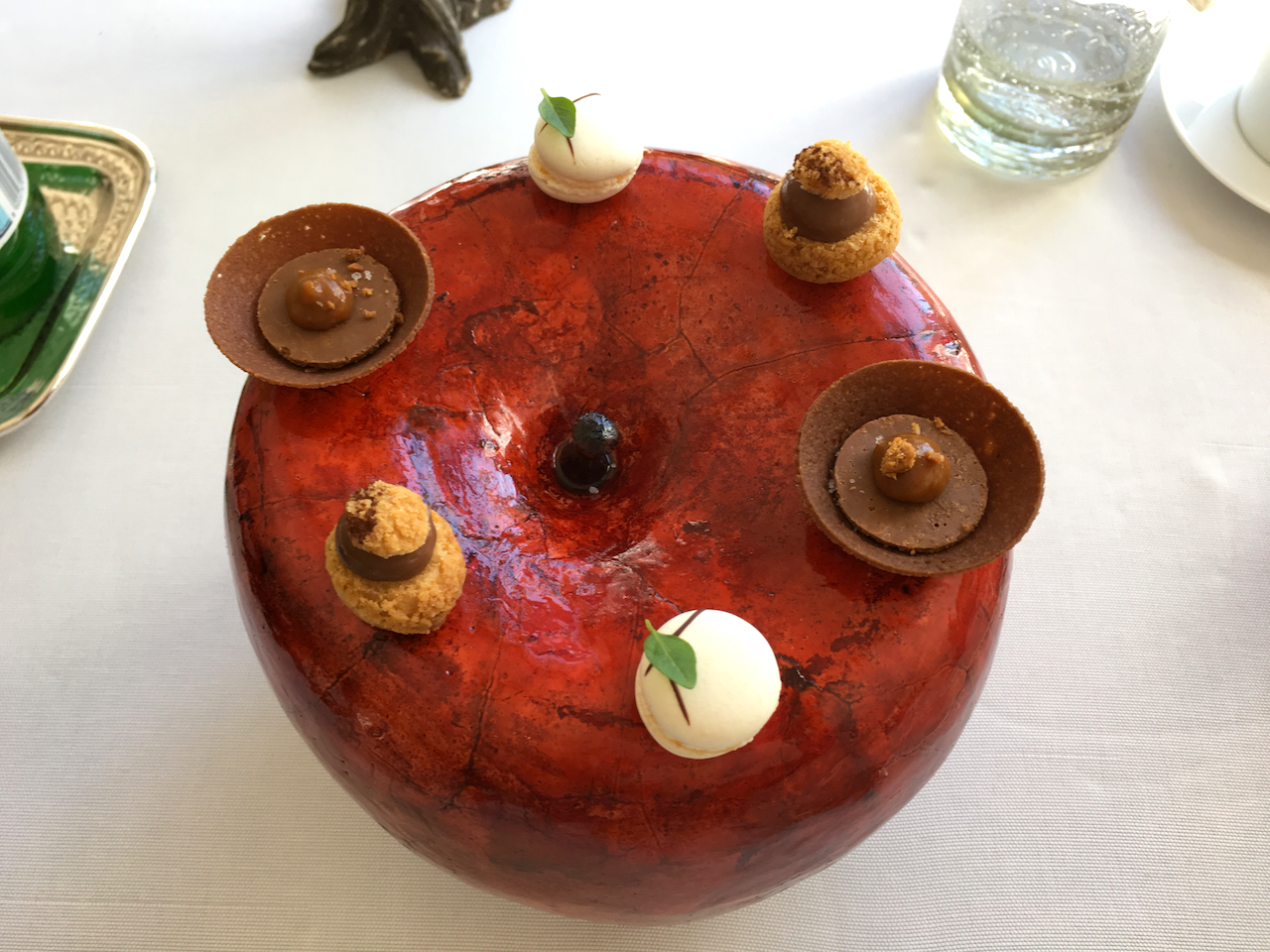
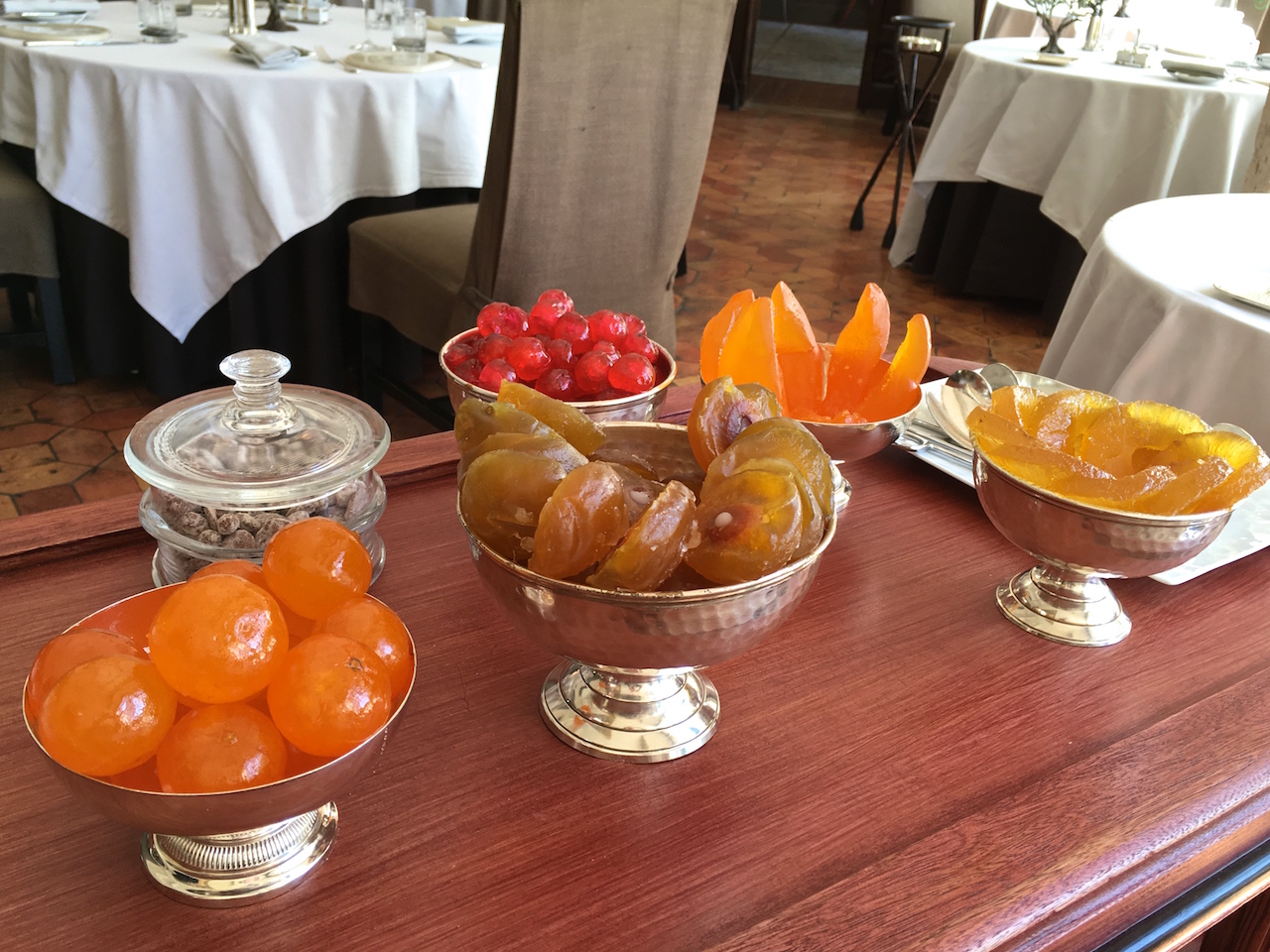
Some final sweets and beautiful candied fruits served with our coffees.
"Classic" is a word we use so often in the world of gastronomy, but we sometimes seem to forget the true meaning of this word. Classic means "serving as a standard of excellence", and the Oxford dictionary even offers as a definition: "judged over a period of time to be of the highest quality and outstanding of its kind." Yet these days classic cooking isn't always considered as a standard of excellence, especially by those who equate experimentalism with excellence. Inescapably however, the best examples of avant-garde cooking will become classics in their own right. What proves to be less good, will luckily get lost in the mists of time.
Classic cooking can by definition never be in the gastronomic vanguard but, to my mind and palate, classic cooking can be just as thrilling as the most modern, avant-garde cuisine. Good food starts with good ingredients, and we all know French restaurants have access to some of the finest ingredients in the world. However, it's also very much about techniques and craftsmanship, and the French continue to excel in that. At l'Oustau you experience this throughout the meal, on the plate, but there's also a lot going on behind the scenes.
Take the extraordinary pork mille-feuille for example, a tremendously time-consuming dish to prepare, a dish that can only be cooked by an experienced, technically skilled chef. Classic cooking at the highest level, and what a way to display the gastronomic versatility of the glorious pig. The same goes for the potatoes. And let's not forget the expertly house-baked bread and the impressive selection of candied fruits. I did sense however, that the cooking at l'Oustau is best expressed in the à la carte dishes; my husband had the lunch menu, which was a still a good, but a slightly different experience. The 70-page wine list represents a 60,000 bottle cellar and the number of venerable vintages and famous wines is extremely impressive (Lafite 1870, Latour 1945, Hermitage La Chapelle 1961, to name but a few highlights). We plumped for the Moët & Chandon Brut Impérial 1911 and a treat it was too, see tasting note. Do stop at this marvellous place when you're in Provence, I'd certainly go back in a heartbeat.
There's no comment section on this website, but please feel free to contact me through Twitter (@ElizabethOnFood) or Facebook (ElizabethOnFood).













